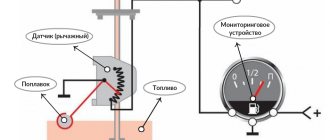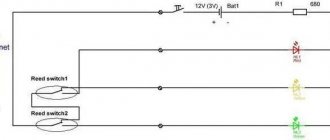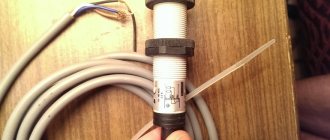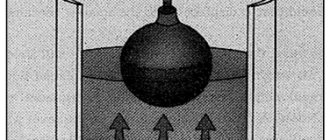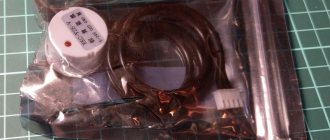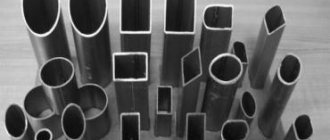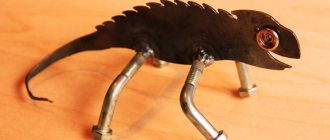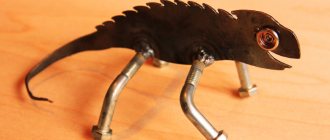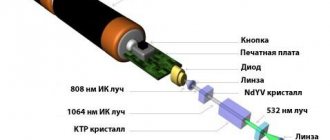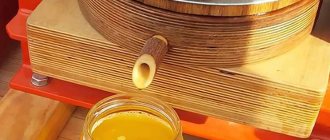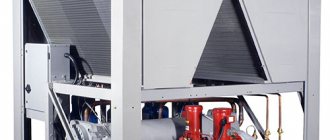Remote control float level sensors (alarms)
Float level sensors OWEN PDU are devices designed to signal the level of liquids. OWEN PDUs are used as part of systems for monitoring and regulating liquids (water, solutions, light petroleum products and other liquid media, including aggressive ones, with the exception of those corrosive to the sensor material) in various tanks. ARIES remote control units are used to measure both current and limit (maximum or minimum) liquid levels. Float level sensors have general industrial and explosion-proof versions.
OWEN float level sensors are resistant to foam and bubbles and can handle viscous liquids.
To control the level of non-viscous liquids, level sensors with a cylindrical float PDU-1, PDU-2 are produced, for monitoring the level of viscous liquids - with a spherical float PDU-3. According to the installation method, sensors with horizontal and vertical installation are distinguished.
The OWEN company produces single-level, two-level and three-level float sensors; it is also possible to manufacture OWEN PDU sensors with explosion protection of the “intrinsically safe circuit” type 0ExiaIICT4X. Check out the explosion-proof sensors PDU-Ex.
To connect to the automated process control system, OWEN PDU sensors are equipped with a silicone cable AWG 24 with a length of 1 meter to 120 meters, OWEN PDU-N are equipped with an electrical connector standard DIN 43650 A.
Modifications of single-level sensors
| Model | Installation type | Float type | Rod length L, standard version | Maximum rod length L (on request) |
| PDU-1.1 | Horizontal | Cylindrical | 100 mm | 2,500 mm |
| PDU-2.1 | Vertical | Cylindrical | 100 mm | 2,500 mm |
| PDU-3.1 | Vertical | Spherical | 100 mm | 3,000 mm |
When ordering a modification with an extended rod, the length multiplicity is 50 mm.
Modifications of two-level sensors
| Model | Installation type | Float type | Rod length L, maximum (on request) |
| PDU-1.2 | Horizontal | Cylindrical | 2,500 mm |
| PDU-2.2 | Vertical | Cylindrical | 2,500 mm |
| PDU-3.2 | Vertical | Spherical | 3,000 mm |
Two-level sensors are produced to order. When ordering, the multiple of rod length is 50 mm.
Modifications of three-level sensors
| Model | Installation type | Float type | Rod length L, maximum (on request) |
| PDU-3.3 | Vertical | Spherical | 3,000 mm |
Three-level sensors are produced to order. When ordering, the multiple of rod length is 50 mm.
Features of the design and installation of OVEN PDU level sensors
The level sensor has a float that moves along a vertical rod. There is a permanent magnet inside the float, and a reed switch is located in the rod, which is a hollow tube. The reed contact is activated when a magnet approaches. If installing the sensor on top of the container is not possible, then the float level sensor can be mounted in the wall of the container or in the bottom (Fig. 1).
Rice. 1. Options for mounting the level sensor: horizontal (PDU-1.1) and vertical (PDU-2.1, PDU-3.1)
OWEN RC sensors are produced with normally open and normally closed contacts. Options for the OVEN remote control contacts are shown in Fig. 2.
a) Remote control with normally open contact
b) Remote control with normally closed contact
Rice. 2. An increase in the liquid level in the tank causes the float to move upward and the contact of the level sensor to close/open.
Application of level sensors ARIES PDU
OWEN RC sensors can operate at temperatures up to +105 °C in chemically aggressive environments. Sensor material – stainless steel (12X18H10T).
ARIES PDUs are used to control the level of wastewater, chemically aggressive liquids or food products, including viscous liquids. Float sensors can be used to control liquid levels in vehicles, for example, to control the volume of fuel in heavy equipment: trucks, excavators, diesel locomotives. Here, level sensors operate under conditions of strong vibration and disturbance on the surface of the liquid. To eliminate the influence of these factors, the float sensor is placed in a special damper pipe with a diameter slightly larger than the diameter of the float.
It should be remembered that float-type level sensors are not suitable for measuring sticky and drying liquids, liquids with mechanical inclusions, or when the liquid freezes.
Design and principle of operation
The design of measuring devices of this type is determined by the following parameters:
- Functionality, depending on this device, is usually divided into alarms and level meters. The former monitor a specific tank filling point (minimum or maximum), while the latter continuously monitor the level.
- The operating principle can be based on: hydrostatics, electrical conductivity, magnetism, optics, acoustics, etc. Actually, this is the main parameter that determines the scope of application.
- Measuring method (contact or non-contact).
In addition, the design features are determined by the nature of the technological environment. It is one thing to measure the height of drinking water in a tank, another to check the filling of industrial wastewater tanks. In the latter case, appropriate protection is necessary.
Design of float level gauges and principle of operation
Float level gauges are designed as follows: part of the device is immersed in the liquid, the other half is above its surface:
- An element located in water is called a float - it is a hollow object on which, in accordance with Archimedes' law, a buoyant force acts.
- The part of the float level gauge that is not in the water is a signal processing device. It tracks the vertical movements of the float and transmits movement readings to a number of different devices. In this way, continuous level measurement or alarm is carried out at control points when a given volume of liquid in the tank is reached.
Based on the design differences, we can distinguish narrow-range float level gauges and wide-range float level gauges.
The first (Fig. 1, a), as a rule, are devices consisting of a spherical float, connected through a rod and an stuffing box to an angular displacement transducer (P) into a unified electrical or pneumatic signal. The float usually has a diameter of 80 - 100 mm, is made of stainless steel and floats on the surface of the liquid.
Fig.1. Float level gauges: a) – narrow range, b) – wide range: 1 – float, 2 – flexible cable, 3 – scale, 4 – counterweight.
In wide-range float level gauges (Fig. 1, b), the float is connected through a flexible cable to a counterweight and a reading device indicating the liquid level in the tank.
When calculating float level gauges, design parameters of the float are selected that ensure the state of equilibrium of the “float-counterweight” system only at a certain immersion depth of the float.
Making a water level sensor in a tank with your own hands
Let's say there is a task to automate the operation of a submersible pump for water supply to a dacha. As a rule, water flows into a storage tank, therefore, we need to make sure that the pump automatically turns off when it is filled. It is not at all necessary to buy a laser or radar level indicator for this purpose; in fact, you don’t need to purchase any. A simple problem requires a simple solution, it is shown in Figure 8.
Water pump control circuit
To solve the problem, you will need a magnetic starter with a 220-volt coil and two reed switches: a minimum level for closing, a maximum level for opening. The pump connection diagram is simple and, importantly, safe. The principle of operation was described above, but let’s repeat it:
- As the water collects, the float with the magnet gradually rises until it reaches the maximum level reed switch.
- The magnetic field opens the reed switch, turning off the starter coil, which leads to de-energization of the engine.
- As the water flows, the float drops until it reaches the minimum mark opposite the lower reed switch, its contacts close, and voltage is supplied to the starter coil, which supplies voltage to the pump. Such a water level sensor in a tank can work for decades, unlike an electronic control system.
Types of float level gauges:
Float magnetic level gauges. In the device, the float interacts with a magnet. Any deviation of the float from the magnet is recorded as a change in level.
| ROS-501 float level sensors-relays | SUG-M float liquid level indicators | PMP-052 magnetic float level sensors |
Float magnetostrictive level gauges. A float with a permanent magnet inside moves along a guide rod in which a wire made of magnetostrictive material (waveguide) is stretched. Current pulses are supplied to the waveguide. At the location of the magnet (float), when the magnetic field interacts with the current, pulses of longitudinal deformation arise, which are recorded by a piezoelectric element at the top of the rod. In this case, the pulse travel time is recorded - it is directly proportional to the distance to the surface.
| LLT-MS magnetostrictive float level gauges | VK1700 multichannel level gauges | PMP-201 level-density gauges float magnetostrictive |
Float mechanical level gauges. The float operates a mechanical switch (opens or closes a contact) by direct contact. They work on the principle of communicating vessels.
| DRU-1PM float liquid level sensor-relay | RO-1 liquid level sensors-relays | RU-1 liquid level sensors-relays |
Float Switch - Pump Switch
The classic application of level switches is to control the switching on and off of pumps. The following figure shows two ways to connect a level sensor to the pump circuit: for filling the tank and for pumping out.
As already mentioned, the level relay has a NO and NC contact. In the figure, the brown and blue wires form a normally open contact, and the black and blue wires form a normally closed contact.
In the first case (water pumping mode), the pump is powered through a NO contact (not closed in the lower position of the sensor). When the liquid level reaches a predetermined level (the sensor floats up), its NO contact will close, turn on the pump, and begin pumping out the liquid. The pump will run until the sensor goes down again
When the pumps are running for filling, the situation is the opposite. The pump is powered via the NC contact of the sensor. This means that when the sensor is in the lower position, this contact is closed and the pump is running, the reservoir is filled with liquid. As soon as the sensor floats up, its NC contact will open and turn off the pump.
Vibration level switches
Vibrating level switches are very sensitive and suitable for lightweight materials. This type of relay is installed on the side of the tank on the outside or mounted on the top of the tank on an extension pipe. A level switch with a sensing plug has a piezoelectric crystal that causes the plug to vibrate at its natural frequency. As the height of the material increases, the fork comes into contact with the material, dampening the vibration and activating the relay. When the material level decreases, the plug becomes free of material and the relay returns to normal.
Level switch with sensitive plug TFLS
produced by Proximity Control. The series has universal power supply, external switching indication, adjustable sensitivity and fail-safe setting.
Advantages:
Vibration relays do not need to be calibrated for dielectric constant or bulk material density, making installation and configuration easy. They are ideal for light powders, giving sensitivity for lower density materials compared to other technologies. Reduction in density up to 30 g/l.
Flaws:
The device is inconvenient for the materials forming the coating. The sensor can be physically damaged and as a result the device does not work and this technology is the most expensive.
This is a simple guide to choosing the right technology, depending on many factors, including material properties: flow, abrasiveness, chemical compatibility, temperature, particle size, tack, etc.; and application properties: the need to take into account the environment (for example, explosion hazards), tank pressure, sensor location, etc. Consult a professional if you need more detailed information to help you select a device for a specific application.
We only offer direct supplies of instrumentation from the Dwyer factory. The list and description of products fully corresponds to the printed catalog and the original website of the manufacturer. Share a link to these devices with your colleagues, click on the social network button:
Level determination of powders and other bulk materials
There are many types of relay switching technologies. So there are many ways to determine the level of powder and other bulk materials. With the release of Proximity Controls TFLS
(Tunable Vibrating Level Switch) and
LTS
(Tilt Switch) Series, Dwyer now offers five different spot level detection technologies for powder and other bulk materials.
These are: diaphragm , vane , tilt , capacitance and vibration .
Condition measurement
The oil condition sensor allows for a more rational use of the coolant lubricant resource, since the replacement period is determined not only by the manufacturer’s mileage recommendations, but also by the actual chemical and physical composition of the engine oil.
The device of the condition and oil level sensor of the N57 engine from BMW.
The meter consists of two cylindrical capacitors (6). The outer and inner metal tubes are used as electrodes, between which there is a dielectric - oil. The operating principle is based on a change in the dielectric properties of the oil during aging, which affects the capacitance of the capacitors.
When the level drops, the capacitance of the upper capacitor (5) changes. The temperature is continuously measured using a platinum temperature sensor (9). The change in capacitive characteristics of the capacitors, as well as the signal from the temperature sensor, is converted into a digital signal and sent to the DME unit. Based on the received data, the DME unit calculates oil change intervals.
